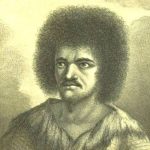
Country Overview:
First settled by the British in 1623, the islands became an associated state with full internal autonomy in 1967. The island of Anguilla rebelled and was allowed to secede in 1971. Saint Kitts and Nevis achieved independence in 1983. In 1998, a vote in Nevis on a referendum to separate from Saint Kitts fell short of the two-thirds majority needed. Nevis continues in its efforts to try and separate from Saint Kitts.
Location:
Caribbean, islands in the Caribbean Sea, about one-third of the way from Puerto Rico to Trinidad and Tobago
Geographic coordinates:
17 20 N, 62 45 W
Area:
Total: 261 sq km (Saint Kitts 168 sq km; Nevis 93 sq km), land: 261 sq km, water: 0 sq km
Area – Comparative:
1.5 times the size of Washington, DC
Land boundaries:
0 km
Coastline:
135 km
Climate:
Tropical, tempered by constant sea breezes; little seasonal temperature variation; rainy season (May to November)
Terrain:
Volcanic with mountainous interiors
Elevation extremes:
Lowest point: Caribbean Sea 0 m
Highest Point:
Highest point: Mount Liamuiga 1,156 m
Natural Resources:
Arable land
Population:
39,817 (July 2008 est.)
Nationality:
Kittitian(s), Nevisian(s)
Nationality:
Kittitian, Nevisian
Ethnic groups:
Predominantly black; some British, Portuguese, and Lebanese
Religions:
Anglican, other Protestant, Roman Catholic
Languages:
English
Country Name:
Saint Kitts and Nevis
Government Type:
Parliamentary democracy
Capital Name:
Basseterre
Independence:
19 September 1983 (from UK)
National Holiday:
Independence Day, 19 September (1983)
Constitution:
19 September 1983
Legal System:
Based on English common law; has not accepted compulsory ICJ jurisdiction
Executive Branch:
Chief of State: Queen ELIZABETH II (since 6 February 1952); represented by Governor General Cuthbert Montraville SEBASTIAN (since 1 January 1996)
Head of Government:
Prime Minister Dr. Denzil DOUGLAS (since 6 July 1995); Deputy Prime Minister Sam CONDOR (since 6 July 1995)
Cabinet:
Cabinet appointed by the governor general in consultation with the prime minister
Elections:
Elections: the monarch is hereditary; the governor general is appointed by the monarch; following legislative elections, the leader of the majority party or leader of a majority coalition is usually appointed prime minister by the governor general; deputy prime minister appointed by the governor general





